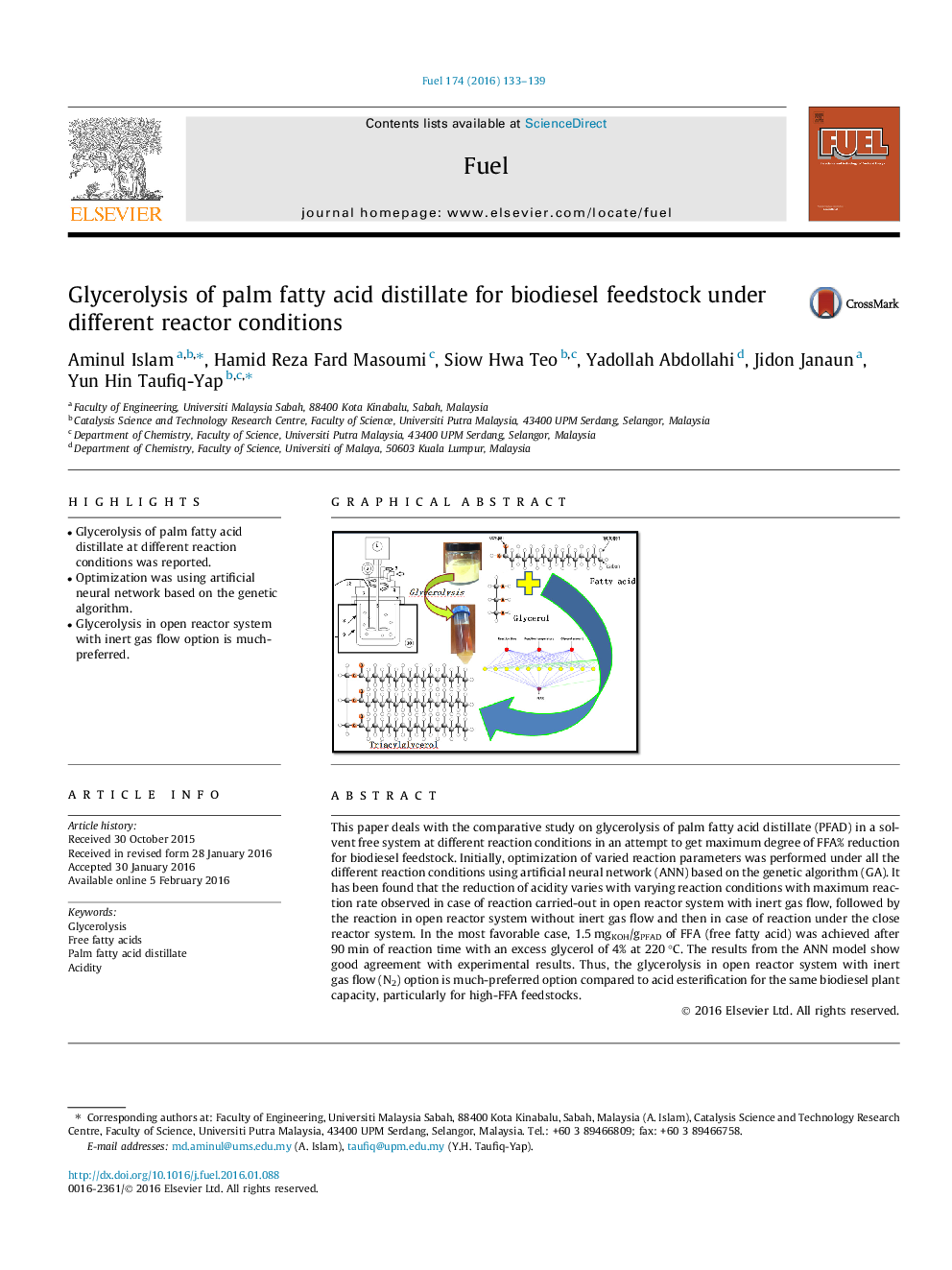| Article ID | Journal | Published Year | Pages | File Type |
|---|---|---|---|---|
| 205040 | Fuel | 2016 | 7 Pages |
•Glycerolysis of palm fatty acid distillate at different reaction conditions was reported.•Optimization was using artificial neural network based on the genetic algorithm.•Glycerolysis in open reactor system with inert gas flow option is much-preferred.
This paper deals with the comparative study on glycerolysis of palm fatty acid distillate (PFAD) in a solvent free system at different reaction conditions in an attempt to get maximum degree of FFA% reduction for biodiesel feedstock. Initially, optimization of varied reaction parameters was performed under all the different reaction conditions using artificial neural network (ANN) based on the genetic algorithm (GA). It has been found that the reduction of acidity varies with varying reaction conditions with maximum reaction rate observed in case of reaction carried-out in open reactor system with inert gas flow, followed by the reaction in open reactor system without inert gas flow and then in case of reaction under the close reactor system. In the most favorable case, 1.5 mgKOH/gPFAD of FFA (free fatty acid) was achieved after 90 min of reaction time with an excess glycerol of 4% at 220 °C. The results from the ANN model show good agreement with experimental results. Thus, the glycerolysis in open reactor system with inert gas flow (N2) option is much-preferred option compared to acid esterification for the same biodiesel plant capacity, particularly for high-FFA feedstocks.
Graphical abstractFigure optionsDownload full-size imageDownload as PowerPoint slide
